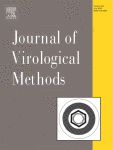Ver ítem
- xmlui.general.dspace_homeCentros e Institutos de InvestigaciónCICVyA. Centro de Investigación en Ciencias Veterinarias y AgronómicasInstituto de VirologíaArtículos científicosxmlui.ArtifactBrowser.ItemViewer.trail
- Inicio
- Centros e Institutos de Investigación
- CICVyA. Centro de Investigación en Ciencias Veterinarias y Agronómicas
- Instituto de Virología
- Artículos científicos
- Ver ítem
On-site detection of equid alphaherpesvirus 3 in perineal and genital swabs of mares and stallions
Resumen
Equine coital exanthema (ECE) is an infectious, venereally transmitted muco-cutaneous disease affecting mares and stallions, caused by equid alphaherpesvirus 3 (EHV3). Diagnostic tools for rapid identification of EHV3 are of primary importance to diminish the risk of EHV3 dissemination at the time of breeding. In the last years, it has been shown that the performance of the insulated-isothermal polymerase chain reaction (iiPCR) is comparable to virus
[ver mas...]
Equine coital exanthema (ECE) is an infectious, venereally transmitted muco-cutaneous disease affecting mares and stallions, caused by equid alphaherpesvirus 3 (EHV3). Diagnostic tools for rapid identification of EHV3 are of primary importance to diminish the risk of EHV3 dissemination at the time of breeding. In the last years, it has been shown that the performance of the insulated-isothermal polymerase chain reaction (iiPCR) is comparable to virus isolation, nested PCR and real-time PCR (qPCR) in detecting pathogens of various animal species. Analytical sensitivity and specificity of the iiPCR were compared with a qPCR, using a plasmid containing the target region of the EHV3 glycoprotein G gene and an Argentinian EHV3 isolate (E/9283/07 C3A). In order to evaluate the diagnostic performance of the iiPCR, nucleic acids of 85 perineal and genital swabs (PGS) of mares and stallions were extracted by tacoTM mini and tested by both techniques. EHV3 was detected in 46 and 45 of the 85 PGS by the iiPCR and qPCR, respectively. There was almost perfect agreement between the two diagnostic methods (98.82%; 95% CI: 95.03–100%; κ = 0.98). The iiPCR had a limit of detection of 95.00% at 6 genome equivalents per reaction and a detection endpoint for viral DNA comparable to that of the qPCR, and did not react with six non-targeted equine pathogens. The iiPCR represents a sensitive and specific method for the rapid on-site diagnosis of EHV3 infection. Its routinely implementation in breeding facilities, and artificial insemination and embryo transfer centers, will contribute to prevent the dissemination of this venereal, highly contagious disease in horses.
[Cerrar]

Autor
Vissani, Maria Aldana;
Tordoya, Maria Silvia;
Tsai, Yun-Long;
Lee, Pei-Yu Alison;
Shen, Yu-Han;
Lee, Fu-Chun;
Wang, Hwa-Tang Thomas;
Parreño, Viviana;
Barrandeguy, Maria Edith;
Fuente
Journal of virological methods 257 : 29-32. (July 2018)
Fecha
2018-07
Editorial
Elsevier
ISSN
0166-0934
Formato
pdf
Tipo de documento
artículo
Palabras Claves
Derechos de acceso
Restringido
 Excepto donde se diga explicitamente, este item se publica bajo la siguiente descripción: Creative Commons Attribution-NonCommercial-ShareAlike 2.5 Unported (CC BY-NC-SA 2.5)
Excepto donde se diga explicitamente, este item se publica bajo la siguiente descripción: Creative Commons Attribution-NonCommercial-ShareAlike 2.5 Unported (CC BY-NC-SA 2.5)

